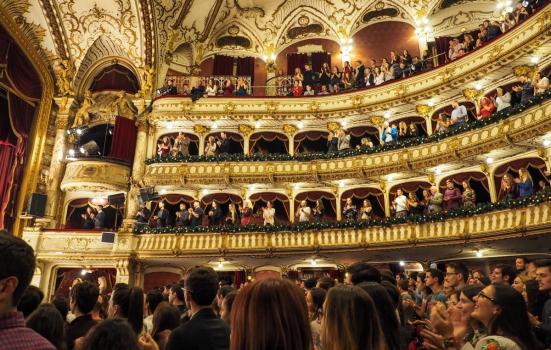With ticket price differentiation reaching new extremes, David Reece considers the longer-term consequences and asks if we should be entering a new era of pricing.

Vlah Dumitru
This is our twentieth year of working with cultural organisations on pricing and earned income strategies. We’ve seen a lot in that time, but it’s the last few years which have really shaken things up. As the dust begins to settle, we may find ourselves in a new era of pricing.
If the previous era was defined by increasing price differentiation, with seemingly ever-increasing prices at the top end and relatively small increases at the bottom, this new era could see that range collapse.
Theatre ticket prices have been rising steadily; between 2013 and 2018 the average ticket price of UK Theatre member venues rose by 20% - twice the rate of inflation. More recently, we’ve seen headlines like “top prices surge 20% from pre-pandemic levels” with “the average cost of the most expensive tickets for West End productions £140.85, up 21.3% on 2019”.
Even if those prices are in the minority, the narrative is pervasive and adds to perception that theatre and the arts are expensive. Whichever way you look at it, £325 a ticket is expensive.
Affordable tickets
Every organisation has ‘affordable’ tickets, but if those tickets are called affordable or accessible, what does it say about other tickets? They’re unaffordable and inaccessible? That's exactly what they are, because only a small minority will be able to afford them. Which begs the question: just because someone is willing to pay, should we ask them to?
That same survey by The Stage also found that longer running shows that had previously hit £200 were coming down in price: Wicked down £68 from 2019 to 2022; The Book of Mormon down £50.
You have to price in line with demand, identifying the points that will maximise revenue while maintaining a steady volume of sales. What we’re finding, in our research over the last 18 months across the performing arts and visitor attractions, is that many prices are already at a key threshold with little headroom for further increases.
How to square the circle
This is a problem without an easy solution. At a time when inflation has hit a high of 10.7% (last November), people are looking to spend less, yet organisations need to generate more income to survive.
As research from Deloitte shows, 39% of consumers intend to spend less on going out and leisure activities. And according to KPMG, 61% of consumers plan to cut discretionary spending in 2023, so times are inevitably going to be tough for the cultural industry.
So how do you square that circle with falling consumer confidence, a tightening of discretionary spending and rising costs? Increase prices and risk losing volume, or don’t change prices and risk losing income?
It’s not all bad news
A report from Spektrix shows sales in December 2022 across the sector were up compared with December 2019 and November’s Barclaycard Consumer Spend highlighted an increase in spend on entertainment (up 11.3% month-on-month) which continued into December, but slowing (+9.2%).
What’s driving this increase? The report highlights things like Glastonbury 2023 and Peter Kay’s new tour going on sale. I’ve also observed (though not done a full analysis) a noticeable increase in the number of record-breaking pantos this year. So people are willing to spend some of their savings (and people have been saving despite the cost-of-living narrative) on those big, popular shows.
That probably also explains why it’s receiving and presenting venues where sales were up the most in December 2022, whereas classical music and arts centres - with a much wider range of programming and a more ‘risky’ product - are still down on pre-Covid sales.
Price matters
So, get the product right and the price doesn’t matter. Except the price does matter. Maybe not for that really popular show for which you can sell tickets at any price, but it matters for everything else, because the more people spend on a ticket, the less they have to spend on anything else.
Recent research for a major London venue found ‘non-attenders’ were willing to pay a high price for a one-off special occasion but were unlikely to become regular theatre-goers as additional tickets would be too expensive. Their expectations of the experience were also high and, while that show might deliver, a lower-priced alternative looks less valuable and becomes harder to sell.
What does this mean for pricing at arts organisations? The pursuit of ticket yield at the expense of everything else is a losing game. That ticket price is simply wrong. It’s time for a new era of pricing which prioritises volume and makes the arts genuinely affordable. This would, encourage audiences to try new things, take risks and establish new habits.
Without people coming through the doors, we have nothing. You can try all manner of schemes to drive loyalty and increase accessibility, but the simplest thing to do is to get your pricing right in a way that maximises volume and income will follow.
David Reece is Deputy Chief Executive at Baker Richards.
![]() baker-richards.com
baker-richards.com
![]() @BakerRichards | @davidnreece
@BakerRichards | @davidnreece
This article, sponsored and contributed by Baker Richards, is part of a series sharing insights into how organisations in the arts and cultural sector can achieve their commercial potential.






Comments
Heath Wilder replied on Permalink
Chasing ATP a folly?